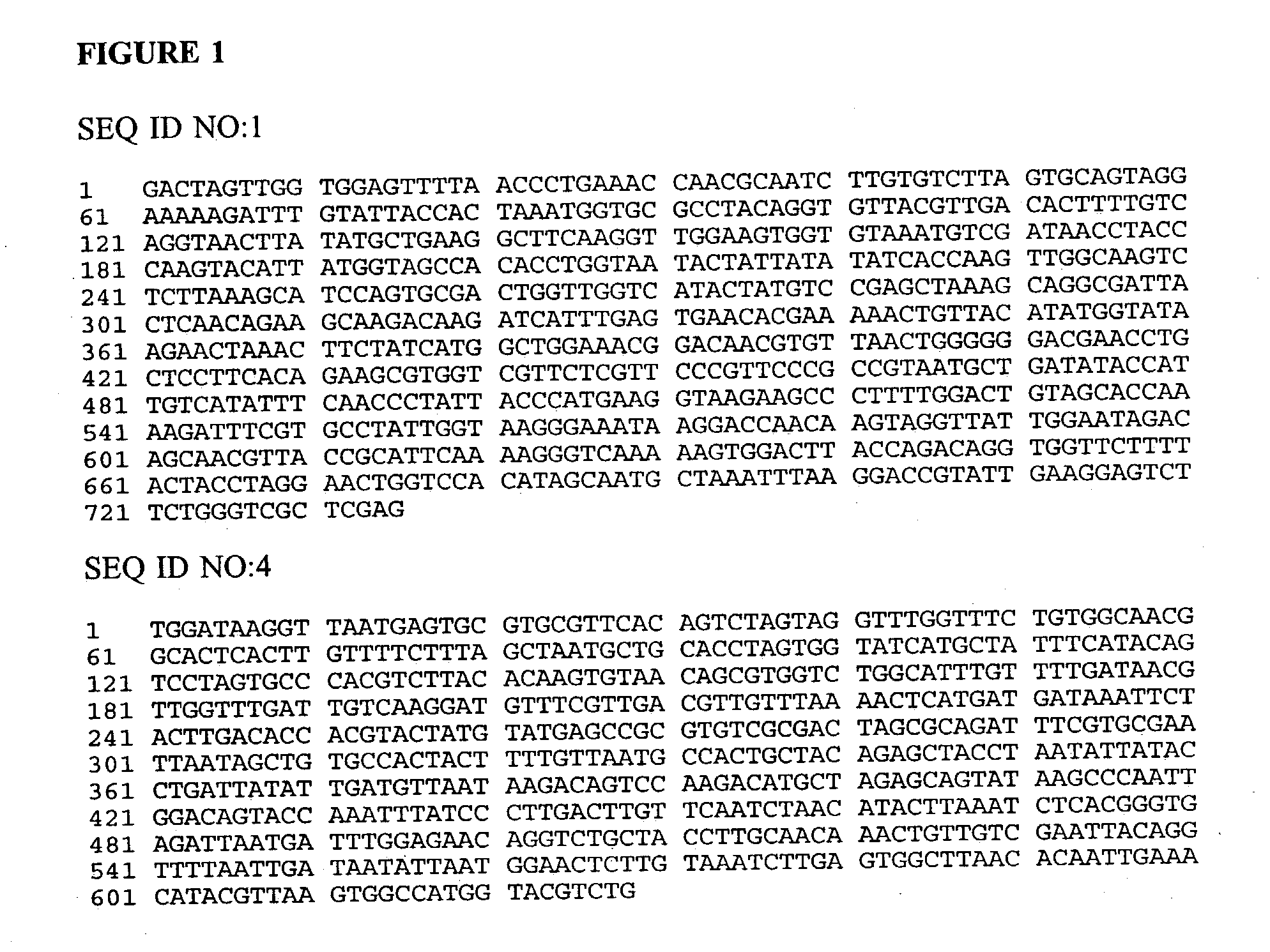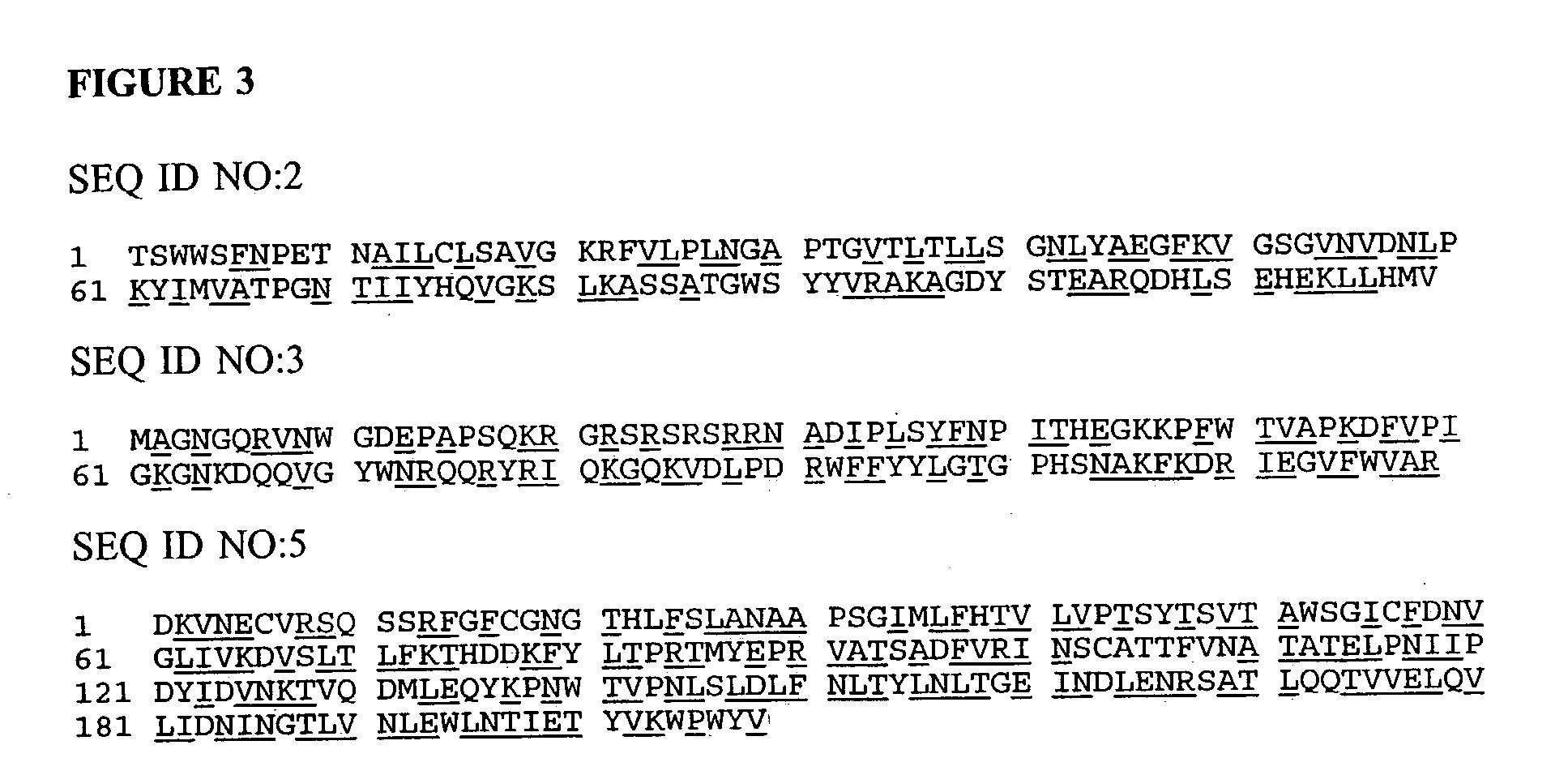Epizootic catarrhal enteritis prevention, treatment and diagnosis
a technology of enteritis and enteritis, applied in the field of epizootic catarrhal enteritis prevention, treatment and diagnosis, can solve the problems of hepatocellular swelling and undigestible fa
- Summary
- Abstract
- Description
- Claims
- Application Information
AI Technical Summary
Benefits of technology
Problems solved by technology
Method used
Image
Examples
example 1
[0358] Study population. Medical records of ferrets with nonspecific enteritis diagnosed between March 1993 and July 1999 on the basis of histologic examination of biopsy or necropsy specimens were reviewed at the Armed Forces institute of Pathology and AccuPath Inc. Criteria for inclusion in the study included a clinical history of diarrhea, lack of a definitive cause of the disease, and one or more of the following microscopic lesions: vacuolar degeneration and necrosis of villus enterocytes; villus atrophy, fusion, and blunting; and lymphoplasmacytic enteritis characterized by a subjective increase in number of intraepithelial lymphocytes. Of 171 reviewed cases, 110 met study criteria. In addition, 10 ferrets from a large breeding colony affected by an epizootic diarrheal disease were submitted to Purdue University for examination. After necropsy and microscopic examination, 9 of these ferrets met study criteria and were included in the study. Medical records were reviewed for hi...
example 2
[0359] Breeding colony outbreak and disease characterization. Ten ferrets examined at Purdue University were submitted during a widespread outbreak of ECE in a large breeding colony. The disease spread from cage to adjacent cage but was also detected at more distant locations within 48 hours of appearance of the initial cases. Once clinical signs were noticed in ferrets in a given area, the disease progressed during a period of several weeks to affect ferrets in all cages within the same building. Initial attempts to contain the disease by use of protective clothing and restricted movement of ferret caretakers were unsuccessful. Palliative treatments such as administration of broad-spectrum antimicrobials and SC administration of fluids were used, depending on severity of clinical signs. Morbidity was initially limited to adult ferrets; mortality rate in most buildings was <5%. Within several weeks the epizootic subsided, although loose mucoid feces, without other clinical signs, we...
example 3
[0362] Immunohistochemical microscopy. Tissue preparation was performed as follows. Tissues were fixed in neutral buffered 10% formalin, embedded in paraffin, sectioned at 7 .mu.m on a microtome, and stained with hematoxylin and eosin for examination by use of light microscopy.
[0363] Immunohistochemical studies were preformed as follows. Formalin-fixed paraffin-embedded tissues from 15 ferrets were selected for immunohistochemical evaluation. Two staining protocols and 2 types of antibodies were used. Following deparaffinization, 2 histologic slides of affected small intestine from each of 10 ferrets examined at the Armed Forces Institute of Pathology were washed in automation buffer with 10% acetone and 0.15% 23-lauryl ether and immersed in 3.0% hydrogen peroxide in methanol for 10 minutes to block endogenous peroxidase activity. After washing with automation buffer, slides were incubated in 0.05% protease XIV for 20 minutes at 42.degree. C. Nonspecific antibody binding was blocked...
PUM
| Property | Measurement | Unit |
|---|---|---|
| Nucleic acid sequence | aaaaa | aaaaa |
Abstract
Description
Claims
Application Information
 Login to View More
Login to View More - R&D
- Intellectual Property
- Life Sciences
- Materials
- Tech Scout
- Unparalleled Data Quality
- Higher Quality Content
- 60% Fewer Hallucinations
Browse by: Latest US Patents, China's latest patents, Technical Efficacy Thesaurus, Application Domain, Technology Topic, Popular Technical Reports.
© 2025 PatSnap. All rights reserved.Legal|Privacy policy|Modern Slavery Act Transparency Statement|Sitemap|About US| Contact US: help@patsnap.com



